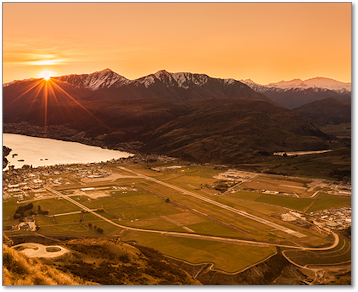Subscriber question:
"I am planning a trip to several high altitude mountain airstrips in the western US. I've heard various opinions on whether to lean the aircraft's engine when taking off from a high altitude runway. What is the right procedure? I do not have a turbocharged engine."
Bob:
“Your POH (Pilot’s Operating Handbook) is your best guide for setting fuel flow in a piston aircraft. The Normal Procedures section and the Performance section gives techniques and details for setting mixture and fuel flow at high altitude airports. Proper mixture and fuel flow settings are essential, especially in a normally aspirated engine, for the engine to achieve all available power in a higher altitude takeoff situation.
 Mixtures (under normal conditions) are set in the full rich position for takeoff. The reason for this full rich setting is engine cooling. Excess fuel helps cool the engine by keeping combustion temperatures down. Many engines are configured so that full throttle operation provides excess fuel to ensure that the engine is protected during takeoff.
Mixtures (under normal conditions) are set in the full rich position for takeoff. The reason for this full rich setting is engine cooling. Excess fuel helps cool the engine by keeping combustion temperatures down. Many engines are configured so that full throttle operation provides excess fuel to ensure that the engine is protected during takeoff.
The exception to full rich operation for takeoff occurs once departure field altitude exceeds 5,000 feet.
In this case, where the air is less dense, the mixture can become overly rich – in other words, it can contain too much fuel for the amount of air available. As a result, the engine may not develop anything near full power.
Again, refer to your POH for the proper high altitude procedures, but generally, in this situation the appropriate procedure with a fixed pitch propeller is to run the engine up to full power while adjusting the mixture to achieve maximum rpm. Do this (just prior to takeoff) in an area free of debris so as to not shower other aircraft or suck up debris into your prop.
With a constant speed propeller, use the fuel flow chart in the POH to set the mixture for maximum power at full throttle at your altitude. If a chart doesn’t exist for your airplane, set the mixture about 100 degrees rich of peak at full throttle according to your EGT gauge. If you don’t have a fuel flow chart or an EGT gauge, set the mixture for smooth running at full throttle on your constant speed prop airplane.
After departure and during the climb out, monitor engine temperatures and be ready to richen the mixture slightly if necessary to keep temperatures in the proper range.”
